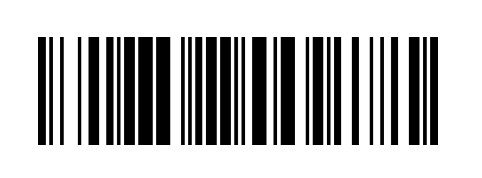Create documents with barcodes from template
When using AutomatedDocs you may need to add a barcode to your generated document. To do so please include in your template the field as:
${BARCODE_variable-name:CODE_TYPE:WIDTH}Please note we only generate the 'bars' part of a barcode, without text below the barcode. If you want text of the code below the barcode, you could add it using another field.
Parameters
- variable-name The name of the variable you will send using our API or synchronize from one of our integrations.
- CODE_TYPE The type of barcode. See the list below for supported types.
- WIDTH the width of the generated barcode image in pixels.
Example
To generate a CODE 128 barcode with a width of 90 pixels, use:
${BARCODE_variable-name:CODE_128:90}This will produce a barcode as shown below:

Supported Barcode Types
AutomatedDocs supports several barcode types, each supporting different character sets or having specific length requirements. For detailed specifications on supported characters and lengths, please refer to Wikipedia.
Most Commonly Used Types:
- CODE_128 and CODE_39 are widely used due to their support for variable lengths and a broad range of characters, along with excellent scanner compatibility.
Full List of Supported Types:
- CODE_32 (italian pharmaceutical code 'MINSAN')
- CODE_39
- CODE_39_CHECKSUM
- CODE_39E
- CODE_39E_CHECKSUM
- CODE_93
- STANDARD_2_5
- STANDARD_2_5_CHECKSUM
- INTERLEAVED_2_5
- INTERLEAVED_2_5_CHECKSUM
- CODE_128
- CODE_128_A
- CODE_128_B
- CODE_128_C
- EAN_2
- EAN_5
- EAN_8
- EAN_13
- ITF14 (Also known as GTIN-14)
- UPC_A
- UPC_E
- MSI
- MSI_CHECKSUM
- POSTNET
- PLANET
- RMS4CC
- KIX
- IMB
- CODABAR
- CODE_11
- PHARMA_CODE
- PHARMA_CODE_TWO_TRACKS